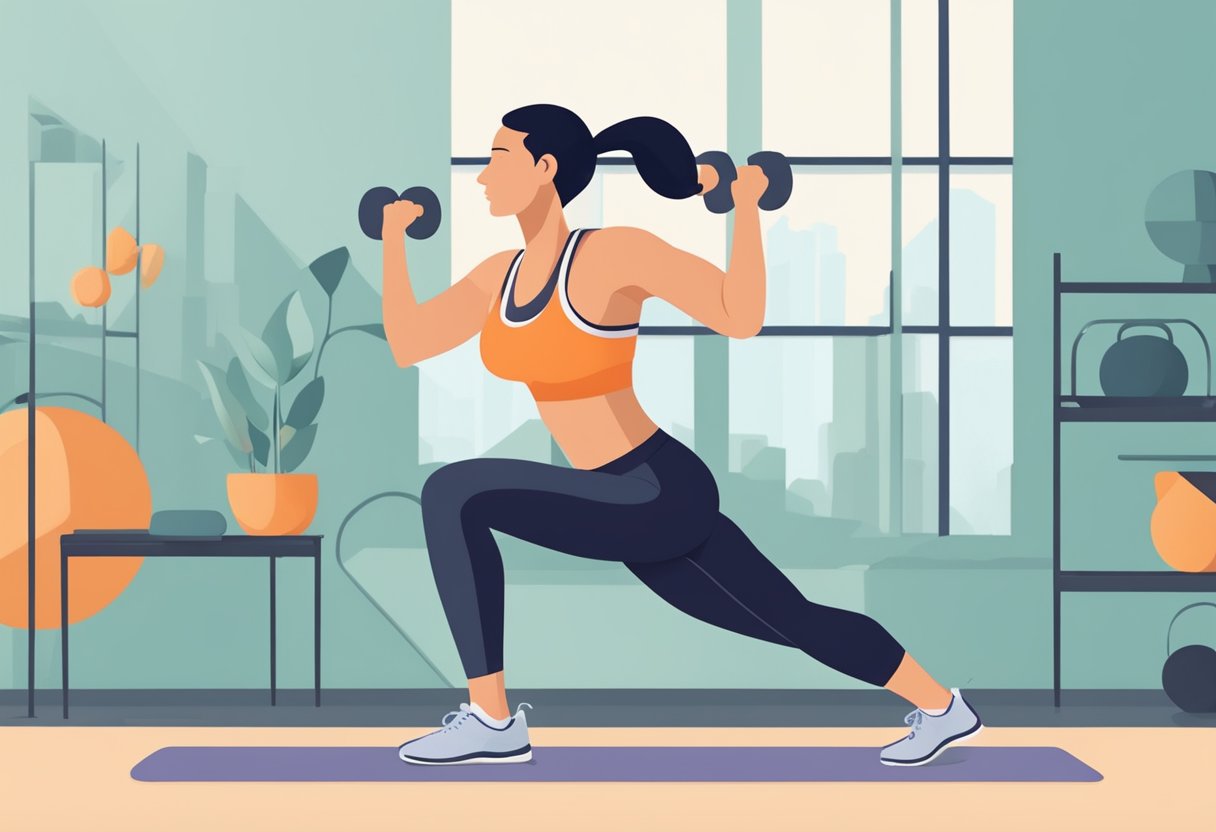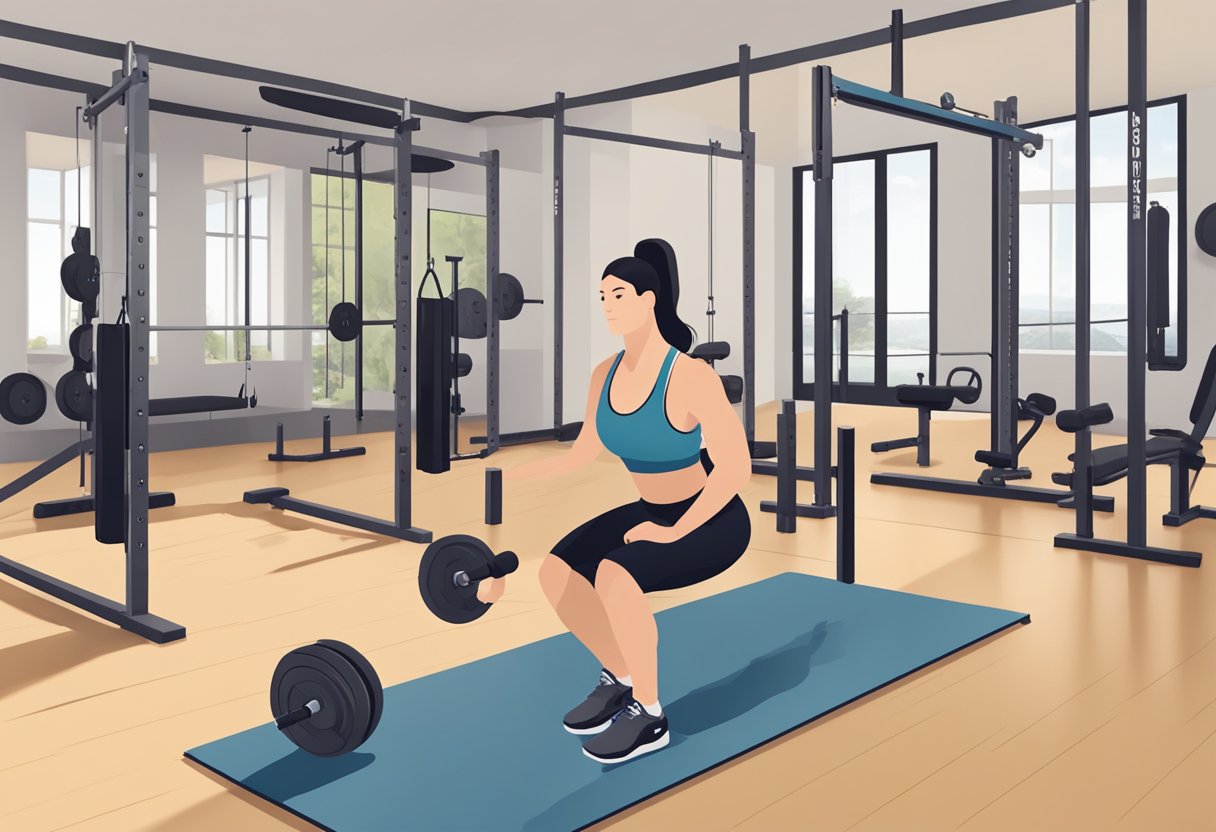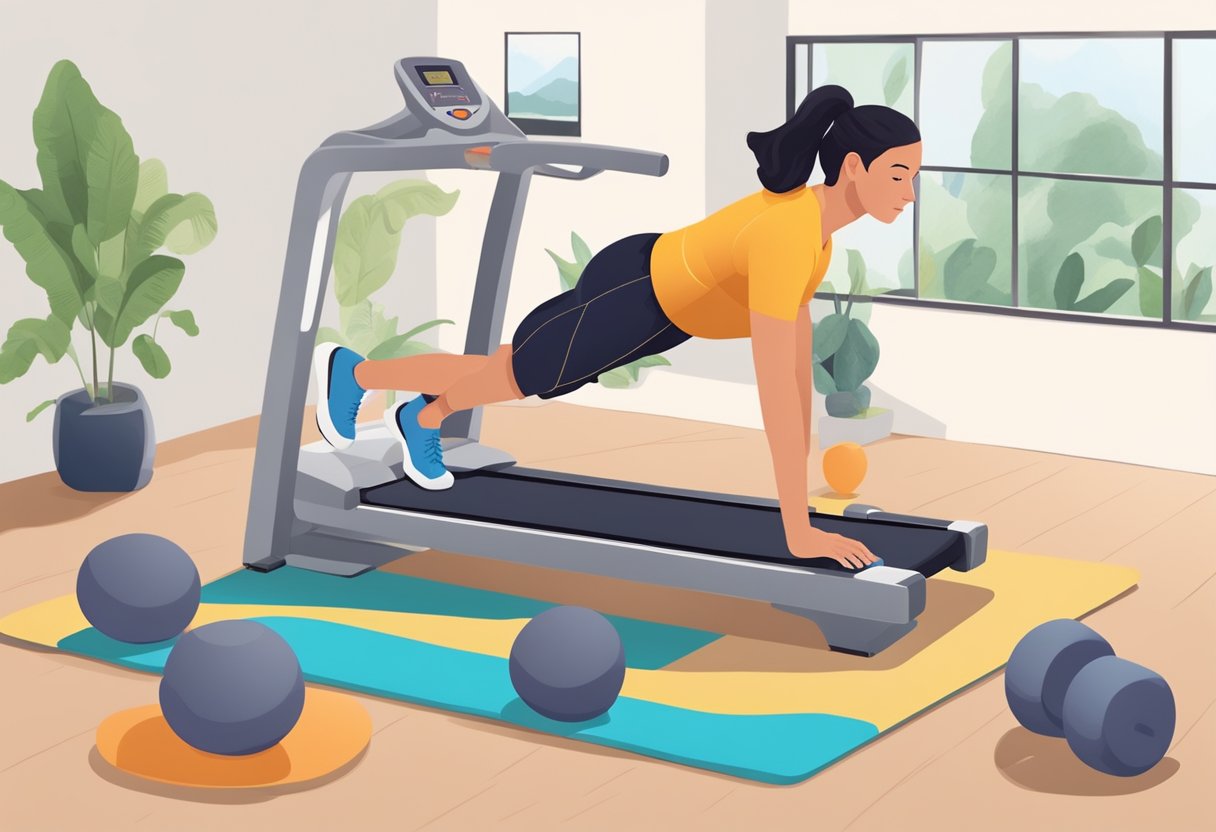The challenge of finding time for exercise in a busy world is a common struggle many face today. With hectic schedules and numerous commitments, dedicating hours to fitness routines can seem impossible.
Recent scientific research suggests that shorter workouts can be just as effective as longer sessions.
For instance, one study found that a daily 25-minute brisk walk can significantly improve cardiovascular health.
This insight is crucial for those seeking efficient ways to stay fit without sacrificing precious time.

Popular Posts
- Massage Gun vs. Foam Roller: Which Recovery Tool Reigns Supreme?
- 27 Best Calisthenics Exercises for Full-Body Strength and Fitness
- 10 HIIT Workouts for Busy Professionals: Max Fitness, Min Time
- Good Posture Working from Home: Optimize Your Workspace to Prevent Discomfort and Health Issues
- The Best Crossfit Exercises for Full-Body Conditioning
25-minute workouts offer a combination of strength, cardio, and mind-body exercises.
Engaging in these compact yet effective routines can lead to substantial health benefits.
According to fitness expert John Smith, “Short, intense workouts can yield impressive results, improving both physical strength and mental well-being.”
These short sessions can include exercises like brisk walking, strength training, or moderate-intensity yoga, which have been shown to boost executive functioning and reduce stress among working adults.
Using 25-minute workouts as a powerful tool for improving health and fitness is becoming more popular.
Evidence shows that these brief sessions are not just time-efficient but also highly effective in promoting overall health.
Whether you aim to enhance your strength, elevate your cardiovascular fitness, or achieve a better mind-body connection, 25-minute workouts provide a feasible solution that fits into any busy lifestyle.
High-Intensity Interval Training (HIIT)

High-Intensity Interval Training (HIIT) is a workout method that alternates between short bursts of intense exercise and brief recovery periods.
This approach aims to maximize the efficiency of your workout in a limited amount of time.
A key study by Gibala et al., 2012 revealed substantial benefits from HIIT.
Participants completed six sessions of HIIT over two weeks. The results showed significant improvements in cardiovascular fitness and insulin sensitivity.
One of the major advantages of HIIT is its effectiveness even in short durations.
Just 25 minutes of HIIT can help you achieve notable fitness gains. It enhances your VO2 max, which measures your body’s ability to use oxygen effectively.
- Improved Cardiovascular Health: You can strengthen your heart and improve circulation.
- Enhanced Insulin Sensitivity: Better control over blood sugar levels.
- Efficient Calorie Burn: Higher calorie expenditure in a shorter period.
Typical HIIT Routine:
- Warm-Up: 5 minutes of light exercise.
- High-Intensity Interval: 30 seconds of all-out effort.
- Recovery: 1-2 minutes of low-intensity activity.
- Repeat: Continue the cycle for 15-20 minutes.
- Cool Down: 5 minutes of stretching or light exercise.
Incorporate HIIT into your fitness regimen, and you might find it a time-efficient way to boost your overall health significantly. The impact of high-intensity workouts on calorie burn and cardiovascular fitness is well-documented.
Optimizing Your 25-Minute Workout
Incorporate short, effective exercises to build muscle.
Benefits of strength training include increased muscle mass, improved metabolism, and better bone density.
Focus on exercises like squats, push-ups, and deadlifts. Use the principle of progressive overload by gradually increasing weights or repetitions.
Short, intense cardio sessions offer significant cardiovascular benefits.
High-Intensity Interval Training (HIIT) boosts metabolism and burns calories quickly.
Alternatively, you can perform Low-Intensity Steady-State (LISS) cardio like brisk walking or cycling for a different approach to heart health.
Connecting mind and body is essential.
Practices like yoga, Pilates, or stretching improve flexibility and reduce stress.
Spend a few minutes each session on mindfulness exercises to enhance mental well-being and focus.
Sample 25-Minute Workout Plan
| Segment | Duration | Activity |
|---|---|---|
| Warm-Up | 5 mins | Dynamic stretches, light cardio |
| Strength | 10 mins | Squats, push-ups, deadlifts |
| Cardio | 5 mins | HIIT (sprints, jumping jacks) |
| Mind-Body | 3 mins | Yoga or stretching |
| Cool-Down | 2 mins | Static stretching, deep breathing |
Make the most of your time. Combine strength, cardio, and mind-body exercises. Use proper warm-up and cool-down techniques to prevent injuries. Maximize intensity and minimize rest periods to keep your heart rate up and muscles engaged.
Efficient Calorie Burning
Shorter, intense workouts can effectively burn calories.
Studies suggest that performing high-intensity interval training (HIIT) for 25 minutes can equate to longer, moderate-intensity sessions in calorie expenditure.
Research by Klika & Jordan in 2013 supports this. They found that the 7-minute high-intensity circuit training workout can offer benefits similar to a traditional 50-minute moderate-intensity workout.
Benefits of shorter workouts:
- Time-efficient
- High calorie-burning potential
- Improved fitness levels
Such workouts include exercises like jump squats, push-ups, and burpees. Completing these in quick succession elevates your heart rate and burns more calories in less time.
| Workout Type | Duration | Calorie-Burning Efficiency |
|---|---|---|
| HIIT (High-Intensity) | 25 minutes | High |
| Moderate-Intensity | 50 minutes | Similar to 25-min HIIT |
This time efficiency allows you to incorporate exercise into your busy schedule while still achieving calorie-burning goals. Choose shorter workouts that challenge multiple muscle groups to maximize results.
Maintaining Consistency
Maintaining a regular exercise routine can be challenging due to busy schedules.
Shorter, focused workouts are an effective solution. A 25-minute workout is easier to incorporate into your day, making it more likely you will stick with it.
According to Dr. Martin Gibala, professor of kinesiology at McMaster University, even a minute of intense exercise can offer significant health benefits. This means you don’t need hours at the gym to see results.
The key to success is consistency. Aim to exercise at least three times per week.
Doing so allows you to build a sustainable routine that can lead to long-term health improvements.
Here’s a quick guide to incorporate 25-minute workouts into your week:
- Monday: Strength training
- Wednesday: Cardio
- Friday: Mind-body exercises
Benefits:
- Improved cardiovascular health
- Increased muscle strength
- Better mental health and stress relief
Implementing 25-Minute Workouts
Incorporating 25-minute workouts into your routine can boost your fitness with minimal time investment. Here are a few examples:
- Strength Training:
- Warm-up: 5 minutes of light cardio (jumping jacks, brisk walk)
- Routine: 4 sets of push-ups, squats, deadlifts, and planks
- Cool-down: 5 minutes of stretching
- Cardio:
- Warm-up: 5 minutes of dynamic stretches
- Routine: 3 sets of high knees, butt kicks, mountain climbers, and burpees
- Cool-down: 5 minutes of light jogging
- Mind-Body Connection:
- Warm-up: 3 minutes of deep breathing exercises
- Routine: 20 minutes of yoga (sun salutations, warrior poses, balance poses)
- Cool-down: 2 minutes of meditation
Maximize the effectiveness of these short workouts with a few tips:
- Consistency is key: Stick to a regular schedule, aiming for at least three sessions a week.
- Intensity matters: Push yourself within safety limits to ensure you are elevating your heart rate and challenging your muscles.
- Proper form: Maintain correct posture to prevent injuries and enhance workout benefits. Bad technique can lead to strains or long-term issues.
Focusing on technique is a critical part of implementing these routines. Each movement should be performed with precision. Remember, quality trumps quantity. Practicing good form not only prevents injuries but also ensures that you’re working the right muscle groups effectively.
Implementing 25-minute workouts requires minimal equipment and can be done at home or outdoors. To get started, create a plan, maintain discipline, and monitor your progress.
Conclusion
Recap: The science behind 25-minute workouts
Engaging in 25-minute workouts can be highly effective. Research has shown that shorter, more intense exercise sessions can yield significant benefits.
High-intensity interval training (HIIT)
HIIT is one of the key approaches. It involves short bursts of intense activity followed by rest or low-intensity periods. This method can efficiently burn calories.
Efficient calorie burning
A 25-minute HIIT session can burn just as many calories as longer, moderate-intensity workouts. This makes shorter sessions very efficient.
Easier to maintain consistency
Shorter workouts are easier to fit into a busy schedule. You are more likely to stay consistent with a routine that doesn’t take much time.
Powerful tool for achieving fitness goals
Shorter sessions can be a powerful tool for achieving your fitness goals. They can improve cardiovascular health, increase strength, and enhance mood.
Encouragement to incorporate 25-minute workouts
Incorporating 25-minute workouts into your daily life can make staying fit more manageable. Whether it’s during a lunch break or right after work, these sessions are flexible and effective.





